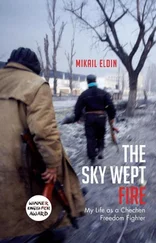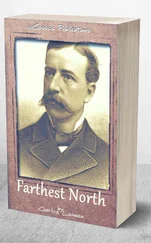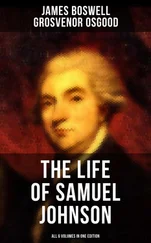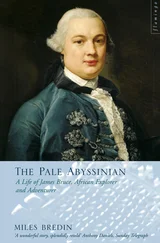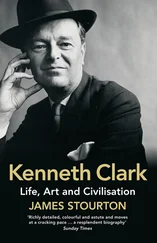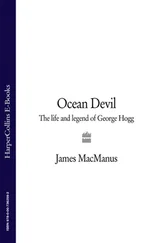“This is probably the last place in the entire world where a trial like this could go on,” he said. “Where else would they tolerate three weeks of picking a jury? Where else would they tolerate lawyers sometimes bumbling, sometimes stumbling? … Where else would they tolerate this in the world, where else but here? Why then must this man suffer because he rode the streets of Paterson, minding his own business, a black man driving a white car? I know you won’t stand for it. Thank you.”
The courtroom was stirred by Brown’s stem-winding broadside—muffled sniffles, angry voices—although the jurors sat with stone faces. After the lunch recess, Vince Hull made his methodical summation in a monotone, shoring up maligned witnesses and reconciling contradictions in testimony. Marins could not be held accountable for failing to identify the defendants at the hospital, Hull said, because he was under sedation. The prosecutor acknowledged that financial rewards were offered in June of 1966 to anyone who helped the police solve the crime, but if Bello and Bradley were testifying for money, why did they wait until October? While Hull lacked the drama of Ray Brown, he was able to turn the weaknesses of his case into apparent strengths. For example, the testimony of Bello and Bradley revealed numerous contradictions in their accounts of what happened that night. Bello said he saw three people driving by in a white car. Bradley said he saw four people. Bradley said he saw the car going west on Lafayette Street. Bello saw the car on Sixteenth Street. These and other inconsistencies only proved one thing, Hull said, that these witnesses had to be telling the truth! Lying witnesses would have been more coordinated. “If they were so interested in the reward,” Hull asked, “why didn’t they get their stories straight?”
Hull proved himself a master rhetorician. For example, several character witnesses for John Artis, including Robert Douglas, his pastor, testified that the defendant was a nonviolent, honest young man. Given that no motive was adduced, the jurors might very well doubt that a peaceful, law-abiding kid would brutally kill three people without any provocation. Hull’s response: The character witnesses did not know their man. “What weight can their testimony have as to [Artis] being law-abiding and nonviolent after hearing all of the testimony as to what transpired in and around the Lafayette Grill on the morning of June 17, 1966.” This sophistry bewildered Artis. Hull discredited his character witnesses by citing the very crime that his character witnesses said he was incapable of committing.
Hull finished his summation with a bit of high theater.
“Ladies and gentlemen of the jury, when you retire to the jury room, all of the exhibits in this case that have been admitted in evidence will be in there with you, including this bullet, this .32 S&W long Remington Peters. That will be one of the items that goes into the jury room with you, and after you deliberate upon the facts in this case, and weigh all of them carefully, that bullet, small in size, will get larger and larger and larger, and that bullet will call out to you and say to you, Bello and Bradley told the truth. That bullet will call out to you and say to you that Carter and Artis lied, and that bullet will get louder and larger and it will cry out to you like three voices from the dead, and it will say to you Rubin Carter and John Artis are guilty of murder in the first degree …”
Hull then emptied out three bags of bloody clothes on a table in front of the jury, each bag’s contents in a separate pile. Beside each heap he placed a picture of the decedent whose clothes they were, the photos showing each person laid out on slabs in the morgue.
“There once was a man,” the prosecutor continued, “a human being by the name of James Oliver, a bartender at the Lafayette Grill, and he wore this shirt, and he looked like this when he was placed into eternity by a 12-gauge shotgun shell. There once was a man, a fellow human being by the name of Fred Nauyoks who lived in Cedar Grove, and he had the misfortune of going to the Lafayette Grill on June 16–17, 1966, and this is how his life ended when he was murdered in cold blood with a .32-caliber bullet through his brain. And there once was a human being, a woman by the name of Hazel Tanis, and she wore these clothes, these bullet-riddled clothes, when she was shot, not once, not twice, not three times—four times; two of the bullets passed through her and two remained in her body, and she clung on to life for nearly a month, and on July 14 of 1966 she passed away, and this is what became of this fellow human being.
“Ladies and gentlemen, on the question of punishment, the facts of this case clearly indicate that on the morning of June the seventeenth of 1966, the defendants, Rubin Carter and John Artis, forfeited their rights to live, and the State asks that you extend to them the same measure of mercy that they extended to James Oliver, Fred Nauyoks, and Hazel Tanis, and that you return verdicts of murder in the first degree on all the charges without a recommendation. Thank you.”
The following day, May 26, 1967, Judge Larner gave the jurors lengthy instructions, advising them that they had to return with a unanimous verdict. He also pointed out that “the race of the defendants is of no significance in this case except as it may be pertinent to the problem of identification.” Finally, he turned to a woman who had been seated at a desk beside him throughout the trial. “All right. You may proceed, Miss Clerk.” The woman got up and started to spin the wooden lottery box that held the names of the fourteen jurors. Carter frantically tugged Ray Brown’s coat sleeve.
“What the hell is she doing?” Carter hissed into his ear. “Get her away from that damn box.”
“Shh, Rubin,” Brown whispered back. “She’s only picking the twelve jurors who will decide the verdict. Two of the fourteen will have to go.”
With a sweep of her hand, the clerk pulled the West Indian’s name out of the box, leaving an all-white jury to decide the defendants’ fate. It did not take long. The jurors deliberated for less than two hours, then returned to the courtroom, which quickly filled with spectators and reporters. Court officers searched the purses of entering women to guard against smuggled weapons. There were wild rumors that Carter’s allies, in the event of a guilty verdict, would try to break him out. City detectives, plainclothes policemen, and uniformed officers from the county Sheriff’s Department circled the room and lined the building’s corridors. Outside, patrolmen were on alert that a guilty verdict could trigger riots in the street.
In the courtroom, the four women jurors had tears in their eyes. The others took their seats with bowed heads. Rubin Carter, John Artis, and their lawyers rose from their seats. A hush fell over the room as the jury foreman, Cornelius Sullivan, announced the verdict: “Guilty on all three counts.” After a long pause he continued: “And recommend life imprisonment.”
Carter’s head dropped, but he showed no emotion. Artis’s legs buckled, and he clenched a fist. The stunned silence of the courtroom was suddenly pierced by a scream from Carter’s wife, her prolonged wails sending a dagger into Rubin’s heart and alarming seasoned court observers. “She let out a scream the likes of which I’ve never heard before or since,” said Paul Alberta, a local reporter, many years later. “It was the kind of scream of someone being physically tortured.”
Tee thought the trial would have a Perry Mason ending: a defense attorney would spin around, point to a member of the gallery, and identify the true killer. Now she collapsed to the floor, unconscious; a friend and three attendees carried her limp body out of the room. Judge Larner asked that the jurors be polled to be sure that they agreed with the verdict. Each one announced: “I agree.” One juror, a short, elderly woman with gray hair and glasses, looked at Carter on her way out. “I feel nothing for him,” she said, then pointed to Artis, “but I feel so sorry for him.”
Читать дальше

